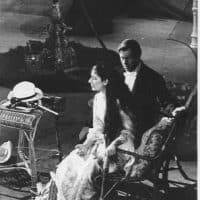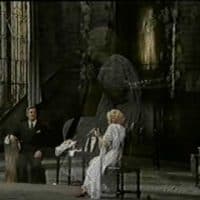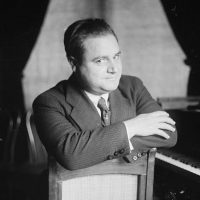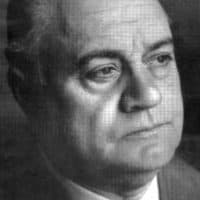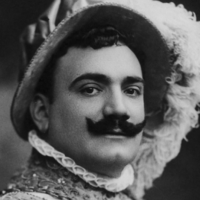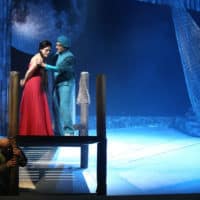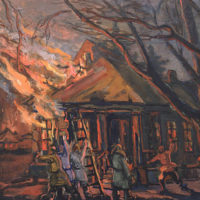The following is a chapter from Gigli: The Master Tenor, a new English-language biography of the great Italian tenor by the late Colin Bain.
THE ARRIVAL OF Gigli in New York, on October 31st, 1921, marked the beginning of an entirely new chapter in both his personal and artistic life, one in which he would at last have a settled home of his own to offer Costanza and an artistic home at the Metropolitan where he could develop his art. Gone now were the nomadic years of passing from theater to theater, city to city. He would concentrate his artistic endeavors henceforth on a single company. He would become a resident of New York. His children would receive American education; English, almost as much as Italian, would be a first language for them. His most pressing need, however, was to sing with the utmost brilliance, for he was now the highest paid tenor in the world and Gatti asked him to open the Metropolitan season.
As the Musical Courier ran a long article featuring a graphologist’s analysis of his handwriting as compared with Caruso’s, in which it correctly discerned artistic instincts, willpower, persistence, and love of privacy as the outstanding traits of his personality, Gigli found at the Metropolitan a company that was at once divided over his preeminence in it and transformed by Gatti’s assiduous recruitments. Among the cliques of singers there was one led by Rosa Ponselle that supported the claims of Giovanni Martinelli to preeminence as the senior tenor of the company, while another rallied around Giulio Crimi, who had given sterling service the previous season. Yet another, small but vocal and almost entirely American, supported the claims of Mario Chamlee. But by far the largest of all, led by Giuseppe de Luca and joined progressively by Galli-Curci, Frances Alda, Lucrezia Bori, and Claudia Muzio, stood firmly by Gigli on the grounds of talent, voice, and the preference of the management. In these cabals, teeming with the intrigues and gossip, the rivalries, jealousies, ambitions, and passionately felt sentiments common in a great opera company, it was apparent to Gigli that the position he held would call for consolidation, the further expansion of his repertoire, and the development of his art to a pitch of perfection that would permit of no peer. In fact, a new day was dawning in opera, which, despite the many famous prima donnas of the period, the great bassos and the extraordinary wealth of baritones, can best be characterized as the age of the great tenors, when the tenor voice reached the zenith of its popularity with a vast public.
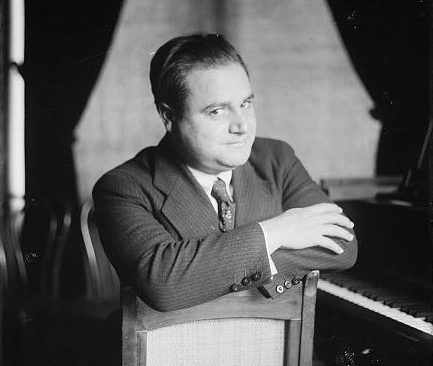
Image source: Wikimedia Commons
For the moment this development was far from clear since, in his recruitments, Gatti had strengthened the Metropolitan company with the widest possible variety of voices and talents. Departed permanently was Emmy Destinn, long Geraldine Farrar’s bitter rival who, following the wartime breach in her affair with Dinh Gilly, had married another man and settled in Europe. Newly engaged were Amelita Galli-Curci, svelte, sylph-like, her voice layered in silver velvet, her fioriture often so dazzling that it could be justly said of her, as it had been of Fanny Persiani, that she had a little silver bell secreted in her throat; Feodor Chaliapine, most famous of all bassos, a singing actor of genius bent on recouping the fortune he had lost in the furies of the Russian revolution; Titta Ruffo, famed baritone of immense volumes and rich sonorities, whose dramatic vigor roused audiences everywhere; Aureliano Pertile, distinguished Italian tenor, born like Martinelli in Montagna in 1885, whose vocal scrupulousness and enthusiastic acting had led some to regard him as the complete operatic artist; and, most disturbing of all to her colleagues, especially other sopranos, Maria Jeritza, blonde, voluptuous, and tempestuous, a Moravian-born Austrian court singer with a high dramatic soprano voice, brilliant stage work, and an eclectic repertoire, once the mistress of an Austrian Archduke, wife in turn to several husbands, but now the protegee and mistress of Otto Kahn, multi-millionaire Wall street banker of Kuhn, Loeb & Company, Chairman and President of the Metropolitan Opera Company, aesthete, sometime impresario, and one of the founders of the Council on Foreign Relations. Since Muzio, Farrar, Alda, Ponselle, Bari, Matzenauer, Scotti, de Luca, Amato, Danise, Mardones, Didur, Rothier, and others from the previous season, including Gigli, Martinelli, Crimi, and Chamlee, still remained, the Metropolitan abounded in talent and could justly claim to be a house without a rival in the world, one of the greatest assemblages of operatic stars ever known.
With unerring discretion, Gatti had decided to open the Metropolitan season on November 14th with La Traviata, Verdi’s tristful cameo of thwarted love and primarily, as people understood it, a soprano opera that would not throw into relief the absence of Caruso after seventeen seasons, sixteen of which he had opened. For this grand occasion with its mournful undercurrent, Gatti had selected the strongest possible cast, Galli-Curci making her Metropolitan debut as Violetta, Gigli as Alfredo, and de Luca as Germont père. It was thought that Galli-Curci, then possibly the most popular opera singer in the United States, her voice familiar to New Yorkers from her performances with the Chicago company in the Lexington theater and a legend worldwide through the success of her recordings, would divert attention from the choice of Gigli for the tenor role, but in fact his selection gave rise to such extensive speculation concerning the succession to Caruso that Gatti was moved to issue a rare, characteristically terse statement:
There are but two elements, public opinion and time, which can decide who will be the successor or successors of the great artist. The modern theater has ceased to be a theater of stars and has become a theater of the tout ensemble. What we aim at is a perfectly rounded performance.
This went to the heart of Gatti’s philosophy of the theater, which he would work indefatigably to implement over the next ten years. So far as he was concerned, in future there would be no single great star around whom the company would be constructed but, in view of the plenitude of talent available and the financial resources of the United States, a constellation of all the stars, each balanced nicely against the others according to the often wily but always skillful manipulations of the General Manager acting as a kind of behind-the-scenes master puppeteer. This was a vision Gatti had entertained since his Scala days. Now at last he felt himself to be the master in his own house.
Over the weekend between the 4th and the 7th of November, just a week before the Metropolitan opening, Gigli moved into his new apartment at 140 West Fifty-Seventh Street. If outside it was one of the more fashionable areas of Manhattan, inside it was all Italy-like, except for the highly efficient, very American plumbing and the elaborate kitchen, which the press aptly described as “a culinary laboratory”. The furniture was Italian walnut, the chandeliers were Venetian, the drapes Italian silk damask, the wallpaper was of silk woven in Italy, the carpets were Persian, and the paintings, done on canvas but set into the walls of the main salone in the manner of frescos and depicting three themes close to Gigli’s heart, La festa Romana, The Grape Harvest, and Serenata Veneziana, and consequently representing the Dionysian, the Apollinian, and the Orphic aspects of his personality, had recently been specially painted in Italy. The upper floor was given over to his spacious studio for which he bought a Hardman grand piano at a cost of seven hundred and fifty dollars; to his library of books and musical scores; his study and offices for his secretaries, as well as accommodation for his parrots and costumes. Drawing, dining, and breakfast rooms occupied the central section of the lower floor with a nursery area for the children and servants’ quarters to one side and the parents’ bedrooms, dressing rooms, and bathrooms to the other. The dining room accommodated twenty-four people at table; the drawing room could seat even more. A trilingual governess for the children, Zina della Mura, a chauffeur, Gilberto Fabbri, a cook Amelia dall’Orso, who was ably assisted by Maria Trevisan and Giuseppina Mariani, the devisor of pasta Gigli, and a maid Ada Celli, made up the staff together with Gigli’s two secretaries and the incidental services of Barbara Gazzera. To complete his menage, Gigli bought a Cadillac limousine for Fabbri to drive at a cost of three thousand seven hundred and fifty dollars, to which he would eventually add a Buick Eight, a magnificent Isotta Fraschini, a Lancia, and an Alfa Romeo. Henceforth, whenever he was at home, he would live in luxury. The opening of the Metropolitan season with Galli-Curci, Gigli, and de Luca in La Traviata on the 14th of November 1921 was as brilliant and socially dazzling an occasion as it had ever been, but a certain sadness lay over the theater because the memory of Caruso was alive in most minds. The sets by Joseph Urban were found to be exquisitely beautiful, Galli-Curci’s gowns were so elegant and beautifully worked, the press claimed, as to excite the envy of many of the ladies in the parterre; and the opening ensembles, the brindisi and “Un dì, felice, eterea” were described as “magical”, but the performance then became alarmingly uneven as Galli-Curci began “Ah! fors’è lui” nervously, sang flat several times in “Sempre libera,” got out of time with the orchestra as she proceeded, and ended on a high E-flat that was “pinched and uncertain in quality”. As a result, it was Gigli whose beautiful singing had impressed everyone, who received the main acclaim at the first curtain. Though Galli-Curci, with a great effort, partially retrieved the situation with some moving singing in the next two acts, the effects of the opening scene could not be wholly erased and it was Gigli who emerged, as the San Francisco Chronicle told its readers, as “the singer of the performance”, the finest Alfredo, it was said, New York had heard in many years or, as the Italo-American press in Philadelphia more precisely put it, at least since Roberto Stagno thirty years earlier.
Just three nights later, in Lucia di Lammermoor with Gigli and de Luca, Galli-Curci corrected the unhappy initial impression she had given; her Lucia, like Gigli’s Edgardo, was to remain unchallenged at the Metropolitan during the twenties except for two performances by Toti Dal Monte, whom her relentless pressure soon had excluded from the theater. Having revealed what were then his two main stars, Gatti proceeded to unfold his other wonders, including Maria Jeritza making her Metropolitan debut in the premiere of Erich Korngold’s hauntingly melodic Die tote Stadt. But, despite Gatti’s attitude, the approach of the first of a series of Caruso Memorial Concerts to be given on November 29th rekindled the debate about Caruso’s successor, with Gigli’s name being mentioned more and more frequently as the main contender. This renewal of a debate he had supposed to be fading angered him; he had no wish to be promoted as another tenor’s artistic reincarnation or to be overshadowed by a legend, and he wrote a letter to the New York Times that was published on November 27th:
To speak of a successor to Caruso is a sacrilege and the violation of a tomb that is sacred to Italy and the whole world. Every artist should do his best to gather and preserve the artistic heritage of the great departed, not with the thought of vainglorious self-advancement, but with the fixed purpose of bringing about the triumph of the pure and the beautiful. It was thus that he strove, and we, for the glory of art, must follow his example.
So strong were his feelings about this matter that he paid for a full-page advertisement in Musical America displaying his passionately written original Italian script of this letter, together with an English translation. At the first Caruso Memorial Concert he sang Bizet’s “Agnus, Dei”; at a second, on February 19th, he sang “O Paradiso” and, by way of an encore, a new song “Voce Perduta”, dedicated by the composer to “Beniamino Gigli in memory of Enrico Caruso”. Repeatedly he told the press: “I am not, and do not want to be, a second Caruso. I am the first Gigli”. To drive his point home further, he gave press interviews in his apartment at which he vehemently denounced the whole idea of one singer seeking to benefit himself from the use of another singer’s name. Caruso’s son by Ada Giachetti was so grateful for the firmness of Gigli’s stand at this time that, sixty years later, while he was working on the biography of his father with Andrew Farkas, he rang up Rina Gigli from New York to Recanati to thank her for her father’s attitude. When Gianni Viafara, on a visit to Milan, was asked by reporters about the issue of a successor to Caruso, his menacing response was to growl: “I should like to see the man who is Caruso’s successor!” But he added a commendation of Gigli for the attitude he had taken. For a time, this quieted the controversy. However, when the Victor company issued Gigli’s recordings in covers bearing his photograph above the legend “Beniamino Gigli, Caruso’s Successor at the Metropolitan Opera”, the cause was effectively lost. As so often in modern publicity, the power of the convenient label proved to be greater than that of any reasoned argument or impassioned disclaimer, and it was with the reputation of being acknowledged as Caruso’s successor that Gigli was to be welcomed to Berlin in 1924 and to London in 1930.
As the season advanced, the eminence of the position he now held gradually came home to him. On all sides he was treated with a respect greater than he had ever been shown before. On December 10th he appeared with Frances Alda in his second Bagby Musical Morning at the Waldorf Astoria Hotel and was introduced afterward to Mrs. Rockefeller. Two nights later, at the suggestion of Titta Ruffo, he attended a brilliant reception at the British Embassy in Washington held in connection with the International Conference on Disarmament and sang eleven arias and songs: “a romance in French, one in English, four in Neapolitan, the rest in Italian”, and mixed freely with high officials of the Italian and other governments. To Catervo he confided: “I would never have expected to have reached such heights”. To his surprise, as he sang and triumphed in his established roles, which in themselves drew a clear line of distinction between himself and Caruso in his later period, he found that he was courted on all sides. To the Italo-American community, in particular, not only him, but also his wife and children, became revered figures seen as symbols of Italy’s most popular art.
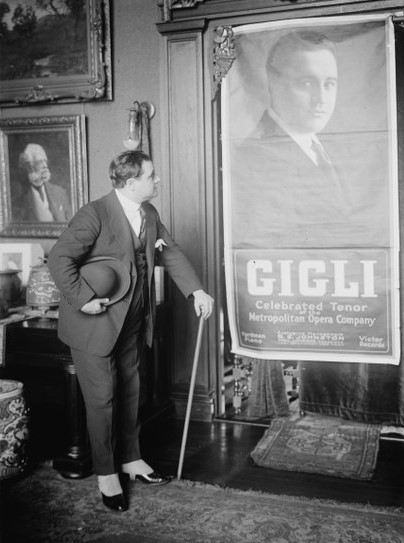
Image source: Wikimedia Commons
In the wider world of the Metropolitan, with its abundance of star singers, a collision of personalities was now in the making. On December 1st it had been the misfortune of Aureliano Pertile to make his Metropolitan debut with Maria Jeritza in her first Metropolitan Tosca. Despite his vocal and histrionic gifts, Pertile was utterly and irretrievably overshadowed by a blonde and blue-eyed Tosca, imperious and improbably athletic, who cast every convention and artistic requirement of the role aside in a performance that amounted to genius of a special kind, drawing an overwhelming response from the majority of the audience. Only the Italo-Americans, most of whom understood the words of the text, remained startled but passive.
Following this success, which raised her at one stroke to the forefront of the Metropolitan stars, Maria Jeritza, who flaunted her affair with Otto Kahn by strolling along Fifth Avenue with him on Sunday mornings walking the dachshunds, Fritz and Sieglinde, she had given him, set her sights on the very highest level of operatic success. She saw two sopranos, Claudia Muzio and Geraldine Farrar, each of whom had a very large following in New York, as standing in her way. Though in her memoirs, written as early as 1922, Jeritza disclaimed all knowledge of such things and expressed sympathy for her colleagues, it remains a fact that during the season both Muzio and Farrar received terrifying but anonymous death threats, and that death threats, tantrums, insults, and the most outrageous upstaging were to follow Jeritza throughout her career, not only in New York but also in Vienna. Certainly Gatti felt himself to be under implicitly powerful pressure from this flamboyant and irresistibly beautiful mistress of Otto Kahn to offer Muzio and Farrar only such meager opportunities for the future as they were likely to decline and, by the end of the season, both primadonnas departed from the Metropolitan, Farrar to premature retirement at the age of forty, Muzio to calmer fields. Space had to be cleared around her, Maria Jeritza felt, for the unfettered display of her talents.
Having given two performances of Tosca with the now completely overshadowed Pertile, Jeritza graduated to Gigli as her Cavaradossi on December 21st in a performance that gave rise to extensive and heated controversy as to their respective artistic merits. She was highly active in her spectacular stagecraft; he was professional but relatively passive in his, with the occasional eloquent gesture, depending on his voice and his singing for the main effects. In the second act, after a rambunctious scene with Scotti in which furniture was overturned and scattered, Jeritza was roughly thrown to the floor and sang “Vissi d’arte” lying supine, not prostrate as legend would have it, on the stage. The effect was to concentrate the attention of the audience on the sensational stage action. “It was”, said one gentleman from the parterre, “the best scrap I have ever seen on the operatic stage”. When Gigli sang “E lucevan le stele” he rose after writing his last note to Tosca and wandered meditatively around the stage, singing his aria “in full bravura style”, Musical America noted.
Over the coming weeks arguments raged among Metropolitan habitues as to which approach was to be preferred, the stage action of Jeritza or the moving singing of Gigli. Into this debate came the authoritative figure of Gina Viafara, Caruso’s former colleague and friend, who in an interview she gave to Musical America came down heavily on the side of Gigli and denounced Jeritza’s blonde, blue eyed Tosca as a travesty of both the libretto and the score. The whole plot of Tosca, she pointed out, turns on Tosca’s being brunette and brown-eyed; it is the Marchesa Attavanti who has to be blonde. As for “Vissi d’arte” being sung prone, it was absurd, Mme. Viafara said, for Tosca to sing this plea to Scarpia who is not listening because he is busy straightening out the furniture. This interview set an interesting precedent when the Musical America reporter became the first of a long line of sometimes American but usually English critics who presumed to advise Gigli as to how he should sing Italian music, by suggesting that he could add “a human touch” to his performance by remaining seated while he sang “E lucevan le stelle”. Caruso, he thought, had remained seated during the first few bars of the aria. But Gina Viafara dismissed this suggestion. Cavaradossi has finished writing his letter to Tosca, she said, and it was “natural and more appropriate” for him to wander around the battlements of Castel Sant’Angelo; agitated people rarely remain seated, she pointed out.
As it happened, Musical America published this interview on the very eve of Gigli’s next appearance in Tosca with Maria Jeritza on January 18th. By then, Gina Viafara’s views had become well-known to the Metropolitan cognoscenti and a major rift had developed in public opinion, “the Italian element” uniting in its opposition to Jeritza’s interpretation, so that when the Moravian diva made her appearance a voice was heard to cry out loudly from the gallery “Guardi la Tosca bionda!” (Just look at the blonde Tosca!). This, and the burst of laughter that followed, momentarily unsettled Jeritza and tempers erupted behind the stage in a performance that became a conflict of personalities and types. The audience appears to have loved the entire thing: “Vissi d’arte” received a mixed but shattering ovation, “E lucevan le stelle” an even greater one. This, in turn, produced tears behind the stage, appeals to Gatti and Otto Kahn, and complaints about a Gigli claque. Gatti knew that with Jeritza and Gigli in Tosca he had a box office winner to set off against their enormous combined cost but, prudence being the better part of his valor, and with his contract coming up shortly for renewal, when Jeritza next sang Tosca it was with Mario Chamlee and, when Gigli next sang it, Geraldine Farrar was his Tosca.
While these events were running their course, Gigli pursued his career with the greatest brilliance, in Mefistofele, Cavalleria rusticana, and Boheme as well as in Traviata, Lucia, and Tosca. Night after night, to Gatti’s immense satisfaction, the house was full to hear him, partly because his own following was rapidly multiplying, partly because people were intensely curious to hear the new leading tenor who was being acclaimed by the recording company they had in common as Caruso’s successor. Few went away disappointed; great ovations followed his arias and duets; he was emerging as the star of the season despite the success of Maria Jeritza, who was the only artist inclined to challenge him. But the shadow of Caruso placed a great responsibility on him. He had to, at all costs, avoid the anticlimactic stigma of being the pygmy, or even the artist of moderate stature, elevated to sit on a giant’s throne. For this reason, he resolved to be always himself, to cultivate his own genius and art, avoiding the trap into which many of his contemporaries fell of emulating Caruso; and, in these early months of his supremacy, he rejected all pleas by Gatti to appear in Pagliacci or Aida, operas for which Caruso had been famous, and insisted instead on developing his own, highly personal repertoire. The price of this, Gatti warned him, would be the honor of opening the season in subsequent years. Unhesitatingly, Gigli accepted that; he would allow nothing to divert him from pursuing his individual artistic course; certain famous Caruso roles would follow for him in due course, sung in his own way with his own interpretation.
The result of this was that his first debut of the season was in a role that Caruso had never sung and probably could not have sung as well as he did, that of Mylio in Lalo’s Le Roi d’Ys, a French opera to be sung in French, based on an alluring Breton legend, with the very strong cast of Frances Alda, Rosa Ponselle, Giuseppe Danise, and Léon Rothier in the title role, on the 5th of January 1922. For this novelty, which was receiving its Metropolitan premiere, a most elaborate production was prepared with beautiful sets by Joseph Urban. All of the principals worked very hard on preparing their parts, but none worked as hard as Gigli, for whom it was the first venture into French opera sung in French, requiring him to spend countless hours learning French, mastering French diction, probing the subtleties of French meaning, and endeavoring to strike a balance between the tonal purity of his own Italian vowels and the nasal tendencies of the French language. In this, according to the reviews, he met with reasonable success, displaying “an unexpected mastery of the Gallic idiom”. Additional hours he had spent on French with the children’s governess, Zina della Mura, had proved fruitful in opening up for him the whole genre of French opera lyrique in the original language.
Rehearsals, in which Gigli distinguished himself by singing always in full voice, as it was his custom throughout his career, never sparing his voice since singing did not tire him, were not without tensions, because of the imperious Alda, secretly envious of Ponselle’s blossoming career, who insisted on asserting her unofficial authority as Gatti’s wife by ordering the other principals around the stage in a manner that befitted her legend as Queen of the Metropolitan and alleged heir to the legacy of Nellie Melba in the matter of prima donna histrionics. “Stand there! Move over there, Ponselle!” was Alda’s idea of the tout ensemble under the supervision of the stage manager. Gigli, Ponselle noted, had an interesting way of dealing with her. When she presumed to tell him how to sing or move, he smiled, bowed, and proceeded to do exactly what he would have done anyway. Alda could not cope with this; accustomed to hot temperament, she found courtesy disarming. But it flattered her to sing with Gigli, and he actually came to like her, regarding her temperament as nothing more than a sign of nervous agitation and feeling real sympathy for her when later Gatti divorced her and prematurely forced her out of the Metropolitan stage. Ponselle was also struck by the magic of Gigli’s voice in his role as Mylio, “one of the most perfectly produced, most uniform lyrical voices ever heard”, she wrote, “so lyrical in L’elisir d’amore, so youthful in La Bohème, and yet so manly in Andrea Chénier and La Gioconda”. She, too, drew closer to him during these rehearsals and played a part in reconciling Giovanni Martinelli to him through a quiet, private arrangement whereby the two tenors tacitly agreed to pursue their two careers along essentially separate lines, each developing his art in his own way. One result of this was that Rina Gigli could remember Martinelli taking her for walks in Central Park.
At the premiere of Le Roi d’Ys, Gigli’s Mylio proved to be the sensation of the performance, mainly for his beautiful singing of the aubade “Vainement ma bien-aimée” but also for the electrifying effect of his first Metropolitan high C from the chest sung chillingly from side stage to an astonished audience. According to W. J. Henderson, his performance had “great musical value” and he had sung with “beautiful refinement of art”. Ruth Crosby Dimmick in the Morning Telegraph saw him as “the warrior Mylio … robust, sincere, and in tent”. Others noted “the haunting loveliness of his voice” and “the storms of applause” that followed his singing of the aubade. But, although it proved to be a personal success for Gigli and all its performances that season were well attended by enthusiastic audiences, Le Roi d’Ys was not subsequently revived at the Metropolitan because the opera itself, despite its spectacular staging, excellent singing, and fine acting, lacked intrinsic musical interest, only the attractive overture and the lovely aubade commanding prolonged attention. Gigli’s interest in the French repertory, moreover, turned to other works. He subsequently made the aubade a feature of many of his concert programs, but the historical importance of his Mylio lay in its opening up of a new section of his repertoire with singing that was highly successful and memorable for its beauty.
Already he was overwhelmingly the idol of the Italo-American community, but lacking Caruso’s flair for publicity and cherishing his privacy to a degree that was potentially hazardous for a great figure of the operatic stage, he seemed remote and inaccessible, a man with whom contact could scarcely be made through the surrounding cordon of his secretaries and more intimate admirers. His publicity, such as it was, handled for him by his newly engaged publicity agents, Paul Langone and Selma Robinson, was little more than an anodyne projection of domestic tranquility and alleged ordinariness in which no one quite believed and still fewer took interest. A step toward rectifying this situation was taken in January 1922 when the noted Broadway comic, Gennaro Granese, held a reception for Gigli and his family in his home, to which he invited leading figures of the Italo-American community and a large part of the Broadway theater world. At it, Granese’s beautiful daughter, Concettina, sang a song written by her father in Gigli’s honor. “Who has heard you will never forget you, oh great tenor”, it ran in translation. “When you sing, you touch the heart, and this only Gigli can do”. Gigli responded by singing “Torna a Surriento”, the composer of which, Ernesto de Curtis, was among those present. De Curtis promptly took over from the accompanist, Raffaele Bonelli, and played the accompaniments while Gigli sang other de Curtis songs, among them “Tu ca nun chiagne” and, in English, “Goodbye, Mari”, de Curtis’ latest popular hit.
Out of this reception was born not only a more personal contact between Gigli and leading figures of the Italo-American community and the Broadway theater world, but a growing friendship and lasting artistic association between him and Ernesto de Curtis that was to result in a long series of best-selling recordings and a number of popular musical films for which de Curtis wrote the main songs. Gigli’s voice would carry de Curtis’ music into most musical homes around the world, while de Curtis’ compositions would provide Gigli with the kind of popular hit that helped to make his name a household word among people who rarely or never attended the opera. Working directly with a composer, Gigli found, could be a fruitful modus operandi for a famous singer. Once Rubini had collaborated directly with Bellini in this way, as Duprez had with Donizetti. In opera such collaboration had long since passed from the scene, but in the field of the Italian and Neapolitan song it was still possible in the 1920s and 1930s, and Gigli acted on it promptly. So soon as he had sung a successful Le Roi d’Ys in Philadelphia, he appeared in what was effectively his North American concert debut before an audience of eight thousand in Masonic Hall, Cleveland, and, after he had sung “O paradiso,” “Vesti la giubba,” “O dolce incanto” from Manon, “Vainement, ma bien-aimée”, and “E lucevan le stelle” with Vito Carnevali accompanying him, he brought de Curtis to the piano for a series of his songs.
“The king is dead, long live the king!” ran Archie Bell’s review in the News. With the Caruso tear in his voice, Gigli sang, he insisted, as well as or better than Caruso. In the Cleveland Press, Wilson G. Smith was even more emphatic in his approval. “Occasions there are”, he wrote, “when artistic supremacy is made so obvious and indisputable that what might be critical functioning becomes a mere reportorial record” – of singing beyond reproach and beyond description, he suggested. With plaudits such as these graven in the hard light of print, Gigli’s initial appeal to the wider American public had been a resounding success. R. E. Johnson and Paul Langone hastened to redraft his concert contract, providing for a fee of two thousand dollars a performance for a minimum of twenty appearances a season. Gigli’s income had by now risen well over one hundred thousand dollars a year, a sum which, converted into Italian lire, became the then immense figure of almost three millions. Since increases were explicit in his Metropolitan contract and implicit in his arrangements with Johnson, Gigli was now a very rich man in Italy and, in the United States, that fabled figure of popular legend, an American millionaire.

Image source: Wikimedia Commons
With Claudia Muzio again in New York, fresh from dizzying successes in South America and Mexico, Gigli joined her on February 11th in a revival of Andrea Chénier that was a resounding success but filled W. J. Henderson with a mixture of admiration and alarm. Gigli sang “admirably”, he wrote in the Herald, but with such vigor that he began to fear for his vocal longevity; he could not believe that those prodigious outpourings of tone could come without strain from a voice that, on other occasions, was capable of such delicate and entrancing lyricism. With his brow furrowed and his ears ever attentive, Henderson recalled the disaster that had overcome Jean de Reszke when he sang Tristan and Siegfried, and, knowing nothing of Caruso’s secret throat operation in 1906, he was haunted by the memory of the increasingly stentorian and baritonal nature of his later singing after the lyric raptures of his first two Metropolitan seasons. Eager to guide Gigli away from such pitfalls, which he saw as the lamentably recurrent lot of most singers facing the strain of Metropolitan performances, he arranged with Richard Aldrich to remonstrate with Gigli in print in order to preserve what they both saw as the lyric glories of his voice. Perhaps, just perhaps, these two leading critics thought Gigli would take heed of them and they would succeed in preserving the most beautiful tenor voice in the world, a voice that was to them, as they made clear in their articles, the precious heritage of a vanishing vocal art.
That for the moment Gigli’s lyricism remained intact became abundantly evident in performances he gave with Galli-Curci of Rigoletto and Lucia. But then, as if to demonstrate to Henderson and Aldrich that his voice was not purely lyrical but was a true spinto of a uniquely flexible kind, Gigli’s career took a new turn in March when, at a matinée on the 4th, he appeared with Claudia Muzio in the Metropolitan premiere of Catalani’s Loreley. Although he had sung the role of Walter previously in Rio, he had taken particular trouble with his acting for the Metropolitan production. In many ways he had restructured his art; he was meticulously coached, becoming an excellent dancer despite his short legs, and he gained a new, more or less spectacular mastery of stagecraft that he put to good effect in his performance. For, at the premiere, the improvement in his acting, together with his singing and Muzio’s, and the excellent staging, created an overwhelming impression that resulted in ovation after ovation. Unlike Toscanini, the New York critics were not impressed by Catalani’s score, but they lavished praise unstintingly on almost every aspect of the production, especially the singing of both Muzio and Gigli. In the New York Times, Richard Aldrich described Gigli as being “admirable in voice, in expression, in dramatic potency”. Max Smith wrote of Muzio as “beautiful to behold and irresistible” and of Gigli as singing “with an impassioned fervor that gripped at the heart strings”, while Musical America claimed that he sang with “so much beauty of tone, fine phrasing, and consideration for all the musical nuances that the scene… will live in my memory for a long time… In the last act Gigli gave a tremendous dramatic performance”.
Soon after his success in Loreley, Gigli became distracted by news from Abramo that Ester had fallen ill, possibly gravely ill. He reproached Abramo bitterly for “not taking seriously the matter of having mamma live in a more comfortable home… but in an attic, so to speak”. Not until he had received a visit from a newly arrived Recanatese immigrant called Braccacini, who had recently seen Ester and found her to be completely recovered, could Gigli put his mind at rest about his mother.

Image source: Wikimedia Commons
The profound relief represented by Braccacini’s news came just in time for his debut as the Chevalier des Grieux in Puccini’s Manon Lescaut with Frances Alda on March 18th. For Gigli, this was both a success crowning the brilliance of his season and an important artistic discovery, for he found in Puccini’s music a feverish and wrenching expression of tragic love that inspired him to some of his greatest singing and best acting, since he felt that both the music and the drama struck chords that probed the deeps of the longings, illusions, and harrowing disappointments of human passion. In the love duet of the first act, in the great scene between Manon and des Grieux in the second act, in the heartrending finale of Act III, and in the final scene, he made an impression that, it was said, not even Caruso had equaled.
The next day, Sunday, he celebrated his birthday, a day early, in his apartment with twenty guests at the table and a large cake with thirty-two candles on it. For this occasion, a six-year-old Rina appeared in Manon’s costume, and Enzo, not yet three years old, as “a society gentleman”. Among those present were Ernest de Curtis and his wife and a radiantly gratified Enrico Rosati with him, on a visit to New York to witness the glory in which his former pupil now basked. He had come at Gigli’s suggestion and expense with a view to a possible migration. Most significant for Gigli’s future career, however, was Detective Dearborn of the New York Police, who was private secretary to the Commissioner Richard Enright and one of the tenor’s most fervent admirers. His birthday itself he celebrated in typical Giglian fashion by singing in Mefistofele at the Metropolitan, Rosati delighting in his success.
As he sang on through the season in Andrea Chénier, L’amore de tre Re, Loreley, and Lucia, Gigli could rightly feel that, despite the dazzling talent Gatti had arrayed at the Metropolitan, it was him who had emerged as the outstanding star of this first post-Caruso season, as is confirmed by Irving Kolodin in his history of the Metropolitan. This carried vast implications for his international stature and increased his influence over Gatti, not to say over Otto Kahn himself. Moreover, important admirers were rallying to his cause. One was the very rich, socially prominent figure Mrs. Clarence McKay, a leading Catholic and holder of Box 6 in the parterre, who had already had him give a private recital for her by arrangement with the Metropolitan. Another, equally rich and socially prominent, was the dazzling and haughty Mrs. Regina Millhiser, sometimes known as Mildred to her more intimate friends. Jewish, mother of two daughters, one of whom she married into an equally prominent Jewish family while the other remained single, she was known as the Queen of Park Avenue for the splendor of the receptions she held in her very large and luxurious apartment in the Carlton Towers. So completely did she fall under the spell of Gigli’s voice that she did not restrict herself to her subscription nights but attended his every performance, whether in opera or in concert, and hung on his every phrase in a state of enraptured delight that thousands came to share. Soon, making herself known to him, she became a personal friend, visiting his apartment and having him sing at receptions that she held, often in his honor. “That was real money!” Rina Gigli exclaimed recalling some of Mrs. Millhiser’s receptions she had attended with her father and mother. “You had to see those receptions to believe them”. When she engaged him to sing for her, Regina Millhiser did not go through the Metropolitan management, which would have implied a smaller fee, but insisted on paying him as much as three thousand dollars direct. He, for his part, demurred at this from reasons of personal friendship and, when she insisted, donated the money to charity as his accounts show. In his eyes, then, he sang gratis; in hers, she had justly rewarded him for what she saw as his genius. But his real reward, and hers, was that her influence swung the whole world of Jewish finance and art behind him.
There were other admirers who were less rich but scarcely less influential, in particular, Caruso’s close friends, Gianni and Gina Viafara. On Palm Sunday, April 9th, 1922, they held a reception in Gigli’s honor attended by hundreds of people with influence in different strands of American life, the Italian Consul to New York, members of the Metropolitan Opera Company, leading musical journalists, United States senators, judges, representatives of women’s clubs reaching from New York to Kentucky, prominent bankers including Pasquale Simonelli and his son William, leading figures in the Italo-American community, Detective Dearborn, such luminaries as Leopold Auer and Emile Bauer, lawyers including Congressman Fiorella La Guardia, and, most significant of all for Gigli’s future, two men from very different walks of life, the wealthy Doctor John A. Harriss, Honorary Deputy Commissioner of the New York Police, and Erasmo Bernabei, millionaire habitue of the Metropolitan, a noted and frequent Wall street investor who, having been born in Rome, had migrated some years earlier to the United States and was clandestinely amassing a fortune from bootlegging.

Image source: Wikimedia Commons
After the tenor and his family were presented to this assemblage, they mixed for a time with the guests while a young pianist, Julia Glass, provided a musical background. Then Gigli went to the piano himself and, with Vito Carnevali accompanying him, sang “O paradiso”, the Improvvisso from Chénier, “Una furtiva lagrima”, “M’appari” from Marta, “E lucevan le stelle”, “Come un bel dì di maggio” from Chénier, “Spirto gentil”, “Torna a Surriento”, de Curtis’ “Non m’ami più”, and several Buzzi-Peccia songs given as encores. “My God, how he sings!” one woman was heard to exclaim as she left.
The Viafara reception placed an unmistakable imprimatur on Gigli’s position in New York. He had been approved, welcomed, and hailed by Caruso’s closest friends; consequently, the core of Caruso support rallied behind him and as far away as Washington and Kentucky he had admirers who, having met him personally and heard him sing, could act as his advocates in distant places where their voices carried weight. Furthermore, his encounters at the Viafaras led to his forming certain lasting friendships. One was with Doctor John A. Harriss, who had become almost as fervent an admirer as Detective Dearborn. Another one with the young William Simonelli, or Guglielmo as Gigli called him; and yet another with Erasmo Bernabei, who, as it happened, had two young sons about the same age as Rina and Enzo; and a third one with Fiorella La Guardia, who became his main legal advisor and would one day be Mayor of New York.
But the season as it proceeded took a heavy toll on him. The night following the Viafara reception, he appeared in Tosca with Geraldine Farrar in one of her last performances; the adoring her Gerry-flappers gave her a great, somewhat preliminary send off, showering her with flowers on the stage. Muzio, too, was leaving. Although she joined Gigli on the spring tour to Atlanta, she made her last New York appearance with him in Andrea Chénier on April 20th. Among the tenors there were also significant departures in the persons of Giulio Crimi and Aureliano Pertile, both of whom had been overshadowed by the resolute striving of Martinelli and the brilliance of Gigli, a combination that had turned the Metropolitan into a hothouse for tenors in which all but the rarest blooms tended to wilt.
There remained for Gigli the final challenge of the tour to Atlanta where he needed to erase the unhappy impression that his previous year’s cancellation had left on what was now a deeply skeptical public. If he could succeed there, it would be the crowning moment of his season. And he did. When he entered the stage in Loreley with Claudia Muzio there was only the faintest ripple of applause but then, as he began to sing, according to Fuzzy Woodruff in the Atlanta Union, sweetness suffused the auditorium and, at the end, there was “a thunder of applause”. Loreley proved to be a great success and a fitting farewell for Claudia Muzio. Two nights later, in Traviata with Galli-Curci, his success was no less. Now at last he could turn to his concert engagements for R. E. Johnson which, he hoped would form a second wing of his American career, opening up for him a wider audience than his opera performances alone could provide. But the season with its many demands had indeed placed a heavy strain on him physically and nervously, and, in his dressing room in Atlanta, there had been a treacherous little draught.
You can learn more about the biography and read additional excerpts at Gigli: The Master Tenor. The website also offers additional resources including reviews of re-issues of Gigli’s recordings on CD along with detailed discographies of his commercial recordings and of his “live” performances.
